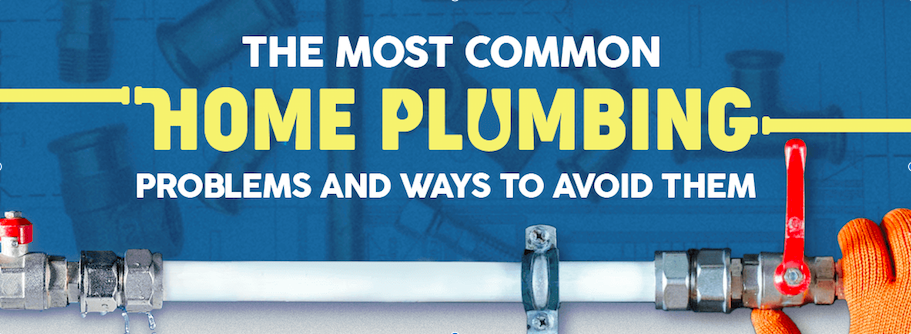The most common home plumbing problems and ways to avoid them
RH Business Marketing Solutions
The most common home plumbing problems and ways to avoid them
As a homeowner, your attention is divided between so many things: work, school, vacations, budgeting, kids, and so much more. It’s all-too-easy for your home’s plumbing—something many of us take for granted—to go unnoticed. However, home plumbing problems have a habit of inserting themselves into our busy lives, even when it’s inconvenient. As part of your regular home maintenance and upkeep, you should be taking steps to prevent major plumbing problems. In this article, we’ll review several of the most common home plumbing issues and the best ways to go about avoiding them.
Water heater problems
Without a properly working water heater, you and your family are in for some cold morning showers. As water heaters age, they may begin to exhibit several signs that they need to be replaced. If you notice declining performance or capacity, for instance, that could signal that the heating element is no longer effectively warming the tank. Water pooling around the bottom of the tank is a sign that the tank wall is starting to be compromised by corrosion, or that the emergency pressure-relief valve has opened and that the pressure in the tank is too high.
Left untreated, any of these water heater issues could lead to the failure of the tank. In the case of either excessive pressure or tank failure, it could result in the tank “bursting” open and flooding your home. At the first sign of any water heater problems, you need to bring in a plumber and follow any recommendations they have for repairing or replacing the unit.
Pipe leaks
Any water leak is bad news for your home. Repairs, cleanup, and mold remediation can collectively cost thousands of dollars.
Many leaks have a specific cause: freezing temperatures. When overnight lows dip below freezing, your home is at risk of frozen pipes. Your furnace generates enough heat to generally protect these pipes, but any interruption to this heating—such as a system breakdown—can result in the pipes beginning to chill, and then freeze. As the water in your pipes turns to ice, it expands, putting incredible pressure on the pipe walls. With enough pressure, the pipe will burst open, flooding your home.
There are several ways to guard your home against frozen pipes. The first is by having your furnace maintained at least once-per-year: this greatly reduces the likelihood of a heater breakdown, which in turn keeps your pipes warm enough to prevent them from freezing. Another preventative measure is pipe sheathing, which involves a plumber putting insulated material around the pipe to slow down the heat loss in the event your heater stops working. Finally, on the coldest nights of the year, you should run your faucet at a slow drip. Moving water is less likely to freeze than stationary water.
Sewer line trouble
A sewer backup is a waking nightmare for any homeowner. This occurs when a clog or blockage forms in the sewer line. With nowhere to go, the wastewater from your home comes back up through the drains, toilets, and sinks. It’s a disgusting disaster. Generally, sewer line blockages are caused by either household waste or by tree roots. The good news is that you can take preventative measures to keep clogs from happening. Let’s dive in.
There are certain types of food waste that are known to cause sewer line issues. Most infamously, grease. Grease and oils change from a liquid to a solid as they cool, making them incredibly dangerous to a sewer line. What gets poured down the sink as a liquid might solidify deep in the line, starting a potent clog. Uncooked rice and pasta have a similar issue: as they become waterlogged, they expand and can become stuck in the line. Coffee grounds, eggshells, and flour also tend to stick to the interior walls of a sewer line. With enough of this waste built up, the line will start to partially, and then eventually fully, clog. Never put these items down the sink: dispose of them in the trash, instead.
Your property’s trees can also threaten your line. Sewer lines generally develop small fractures as soil shifts and the line ages. Thirsty nearby tree roots seek out these moisture sources like a homing missile. With enough time, they’ll grow around and then greedily delve into the line. Some sewer line clogs are caused exclusively by a tree root that has grown into the line, fully blocking wastewater from traveling to the municipal sewer. We recommend you talk to an arborist: certain species of trees and bushes with fast-growing, aggressive root structures may need to be moved away from the sewer line.
Protect your home
If you’re noticing any plumbing issues in or around your home, now’s the time to bring in a professional plumber to take a closer look. Many plumbing problems can start small and then quickly spiral out of control, necessitating expensive repairs and cleanup. An experienced plumber can help you diagnose any major issues and offer recommendations for your next steps.
To learn even more about the most common plumbing problems homeowners face and how to avoid them, be sure to check out this infographic.
Guest Contributor: Amanda L

